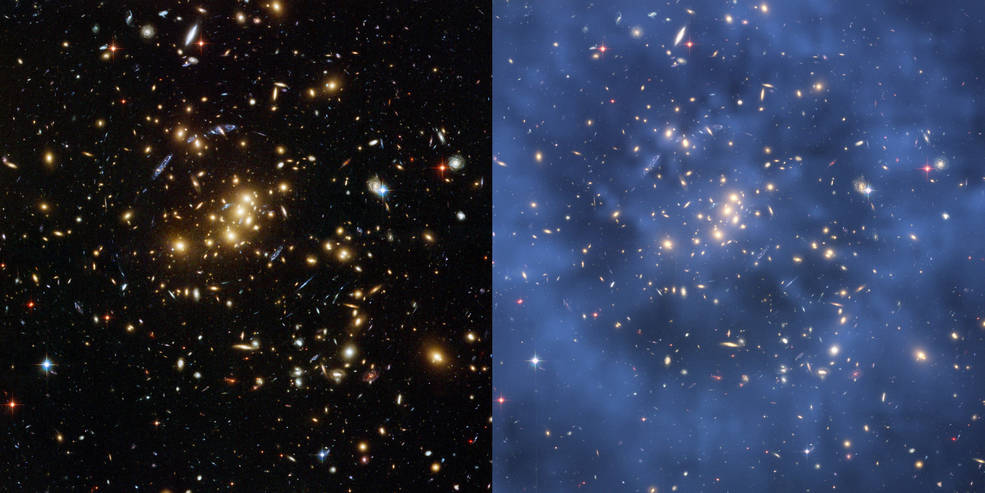Dark matter has long been a mystery to astronomers, in no small part because it is so hard to measure directly. Its influence is plain when looking at its gravitational effects on objects such as far away galaxies, but measuring that influence directly has proved much trickier. But now, a team of scientists thinks they have a way to measure the influence of dark matter directly - all it would require is a specialized probe that sits really far away from Earth for a while.
Gravity is a very predictable force - its strength diminishes with distance. While standing on the Earth, its influence is the strongest source of gravity. Similarly, if an object is floating around the solar system, the sun is likely its strongest source of gravity. But even in the solar system itself, dark matter influences the gravity felt by objects orbiting the sun.
UT video discussing what we know about dark matter.That's because matter (both "dark" and "baryonic" - i.e., normal) outside of the solar system also pulls on objects within the solar system. However, that pull is weaker because of the huge distances between objects. Dr. Edward Belbruno calls this pull the "galactic force," which sounds more like a TV superhero team from the 90s rather than a measure of gravitational influence. Nevertheless, he and his colleagues calculated that approximately 45% of this galactic force was caused by regular matter, while the other 45% was caused by dark matter.
Dark matter's lesser influence doesn't seem to make sense, given that it accounts for up to 95% of the galaxy's gravitational pull. However, that disparity seems to be due to the distance between objects in the solar system and the vast majority of dark matter in the galaxy. Dark matter is clustered in a halo around the outside of the galaxy. Since our solar system isn't very near the edge, dark matter's impact on objects within the solar system is minimized even more.
That doesn't mean it's completely undetectable. Calculates put forward in the paper suggest that the influence of dark matter might have moved the probe Pioneer 10 by as much as 1.5 m (5 ft). Admittedly that is a minimal distance compared to the billions of kilometers it has traveled over its 50-year lifespan. But with the right instruments, a similar effect could be measured on a different spacecraft.
The paper suggests that a probe set up with an experiment specifically designed to monitor gravitational influences could detect the effects of dark matter by simply traveling to 100 AU and dropping a ball into space. This ball would have to be reflective, but it would be subject only to the galactic force. In contrast, the spacecraft, which would also have to have a commonly used power source called a radioisotope thermal generator (RTG), would also be subjected to the thermal force caused by that RTG.
By subtracting the acceleration (or deceleration) caused by the thermal force from the overall acceleration difference of the probe, scientists could figure out what gravitational acceleration is caused by the galactic force itself. Currently, no mission is on the docket that is designed for such an experiment, but one called Interstellar Probe has been put forward as a concept. It would pause at 500 AU to look at conditions there, and with the right equipment could be the probe source needed to directly study the effects of dark matter for the first time.
Learn More:
NASA - How Dark Matter Could Be Measured in the Solar System
Belbruno et al - When leaving the Solar system: Dark matter makes a difference
Futurism - NASA Proposes Sending Spacecraft to Measure Mysterious Dark Matter
UT - By Measuring Light From Individual Stars Between Galaxy Clusters, Astronomers Find Clues About Dark Matter
Lead Image:
Artist's impression of the Milky Way
Credit - NASA
 Universe Today
Universe Today

